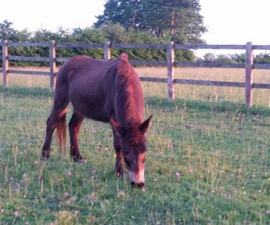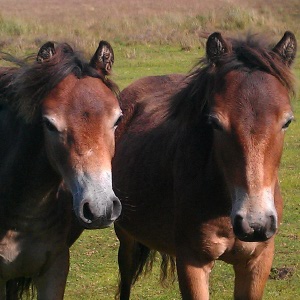how to train in……Osteopathy for Animals

Do You Want To Work With Horses or Dogs or Other Animals As An Osteopath (in the UK)?
This page has been compiled to answer some of the most common questions. If you've any further queries please email info@taranet.co.uk and I'll try to help, or contact any of the organisations listed for further advice.
This page has been compiled with the kind assistance of the Osteopathic Centre for Animals
Are qualifications needed to become an Osteopath for Animals?
Yes - the title 'Osteopath' is protected by law - and this means that only those registered with the General Osteopathic Council can call themselves an ‘Osteopath'. To become an animal osteopath, you'll first need to become a qualified human osteopath (registered with the General Osteopathic Council) - and then further specialist training is required in order to treat animals.
Remember - It is an offence for any person, other than the owner of the animal, to treat an animal unless the permission of the vet in charge of the case or to whom the animal would be referred is sought and obtained. A Veterinary Surgeon is extremely unlikely to refer any customers to you unless you are qualified and insured.
What qualifications can I get in Osteopathy & how do I get them?
To gain entry onto an Osteopathy university degree course, you'll need a basic standard of academic qualifications - e.g. five GCSE passes (grade A - C) plus at least two A Levels (grade A - C). Typically, this particular degree course will require 4 years full-time study. It's possible to complete on a part-time basis although that will obviously take longer to achieve the qualification.
If you're a mature student, entry requirements maybe more flexible. Also, qualified medical doctors and physiotherapists can complete an 'accelerated pathway' at certain educational institutions to achieve an Osteopathic qualification recognised by the General Osteopathic Council.
There are several educational institutes in the UK offering osteopathic qualifications recognised by the General Osteopathic Council.
Once you've achieved your Osteopathic qualification and are registered with the General Osteopathic Council, to work with animals you'll then need to complete a Postgraduate level course looking at the treatment of animals.
There's several options for postgraduate courses in animal osteopathy:
- Contact the Association of Animal Osteopaths (AAO) (formerly Society of Osteopaths in Animal Practice - SOAP). This association was created following close consultation with the General Osteopathic Council, with the aim of promoting the professional development of osteopathy within the area of animal treatment. Contact details for SOAP are at end of this page.
- European School of Osteopathy (UK) is working closely with the AAO to offer a range of relevant courses - find out more here.
- Osteopathic Centre for Animals - One year, Part Time, Postgraduate Certificate in Animal Osteopathy – taught at the Osteopathic Centre for Animals in Oxfordshire. This course is validated by the University College of Osteopathy. All students must be graduate osteopaths and no previous experience of working with animals is necessary (there is significant hands-on experience as part of the course). After successfully completing the course the graduates are fully equipped to practice animal osteopathy. See more here.
Also, you might find the following course interesting:
MSc Animal Manipulation. This is run jointly by McTimoney Chiropractic College and Warwickshire College - with the first year being completed at Warwickshire College. The course leads to the award of postgraduate Diploma in Animal Manipulation from the University of Wales.
You'll normally have to have already trained (and be professionally qualified) in a hands on therapy such as Osteopathy, Physiotherapy, Chiropractic, or hold a BSc in Animal or Equine Science or be a member of the Royal College of Veterinary Surgeons. Visit the McTimoney website for more details
What benefit is there in first training as a human osteopath - I want to work with animals?
All osteopaths must be registered with the General Osteopathic Council - you cannot legally practise as an Osteopath (even for animals) in the UK unless you have completed a General Osteopathic Council recognised qualification.
What difference do qualifications make to a customer?
There's people who call themselves 'therapists' but are not actually officially qualified in either animal or human therapies. Not only can these therapists be a potential danger to their animal (or human) patients, but it's very unlikely that they will be adequately insured.
Being registered with the General Osteopath Council means that you're suitably qualified to carry out Osteopathy. By proving that you've undertaken a rigorous training and achieved nationally recognised qualifications, potential customers know that they are going to receive a high standard of expertise. In addition you're only likely to obtain insurance cover to practise as an animal osteopath in the UK, if you've completed a course recognised by the General Osteopathic Council.
Furthermore, Veterinary Surgeons will only refer customers for osteopathic treatment, to a registered and fully qualified osteopath. A fully qualified Equine/Animal Osteopath will always work within the permission of and liaise with the Veterinary Surgeon of the animal.
Contact Links:
General Osteopathic Council
Association of Animal Osteopaths
European School of Osteopathy
McTimoney Chiropractic College
Osteopathic Centre for Animals
Register of Animal Musculoskeletal Practitioners
University College of Osteopathy
Get tips in how you can train in other popular complementary therapies for animals as follows:
- Canine Bowen Therapy
- Canine Massage
- Chiropractic for Animals
- Equine Bowen Therapy
- Equine Manual Lymph Drainage Therapy
- Equine Massage
- Physiotherapy for Animals
- Thermography for Horses
- Veterinary Acupuncture
